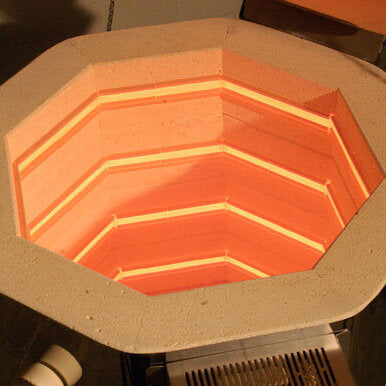The Art of Resource Conservation in Ceramics Studios

It’s time we talk about a dirty little secret about running a ceramics studio, which is that ceramics as a practice can produce quite a bit of waste that isn’t always eco-friendly or sustainable. As the demand for handmade ceramics continues to rise, the responsibility of artists and studio owners to operate sustainably becomes more critical. In this post, we will delve into the significance of resource conservation in ceramic studios and look into some strategies to minimize environmental impact without sacrificing the quality and love for the craft.
Understanding Resource Conservation in Ceramics:
- Clay:
- Even the foundation of ceramics, clay, is a finite resource that takes careful consideration. Resource conservation starts with the simple yet effective practice of recycling clay scraps, also called reclaiming clay. In a ceramic studio, clay remnants can be collected, rehydrated, and reused, minimizing waste and preserving the material.
- Investing in a pug mill, a machine that works as a clay reclaimer, is a game-changer for resource-conscious studios. A pug mill efficiently processes and reclaims clay, allowing us to repurpose excess clay and reduce dependence on new clay purchases, however the initial investment is quite steep and isn't necessarily reasonable for a lot of smaller studios. A pug mill is certainly not a necessity for artists and studios that choose not to make this investment, because most of us reclaim our clay by hand!
- Water:
- Water is another vital component in ceramics, from the initial stages of clay preparation to the final glazing. A sustainable studio places a strong emphasis on water conservation. Implementing water-efficient practices, like using basins or buckets to catch excess water while working the clay, not only conserves water but also provides an opportunity for reuse. One way many studios do this is by using a clay trap on studio sinks, a mechanism that allows clay to settle out of the water being used in the sink so it doesn’t get into the plumbing, and diverting the water to be reused rather than going down the pipes.
- Rainwater harvesting is another way to approach sustainable water management in ceramic studios. By collecting rainwater, studios can supplement their water supply for non-potable needs like clay preparation, reducing reliance on municipal water sources.
- Energy:
- Kilns, the heart of any ceramics studio, consume a considerable amount of energy during the firing process. Especially when using an electrical kiln, resource conservation in ceramics has to take into consideration the optimizing of kiln usage to minimize energy consumption. Studio owners can achieve this by investing in energy-efficient kilns that are well-insulated and equipped with advanced controllers and being mindful and intentional about how we're filling our kilns before firing and avoiding firing unless the kiln is full.
- Exploring alternative firing methods, such as wood firing or solar-powered kilns, is one consideration which is arguably more sustainable, as well.
- Check with your local power company to see if you can opt-in to programs that use renewable energy sources to provide your electricity! My studio has opted in to use as much solar energy as they’ll give us.
Resource conservation in ceramic studios is not only about preserving materials but also about cultivating a mindset that values the interplay between creativity and environmental responsibility. By adopting these strategies, ceramic artists and studio owners can contribute to a sustainable future, ensuring that the beauty of their creations is mirrored in the conscientious use of the Earth's resources.
